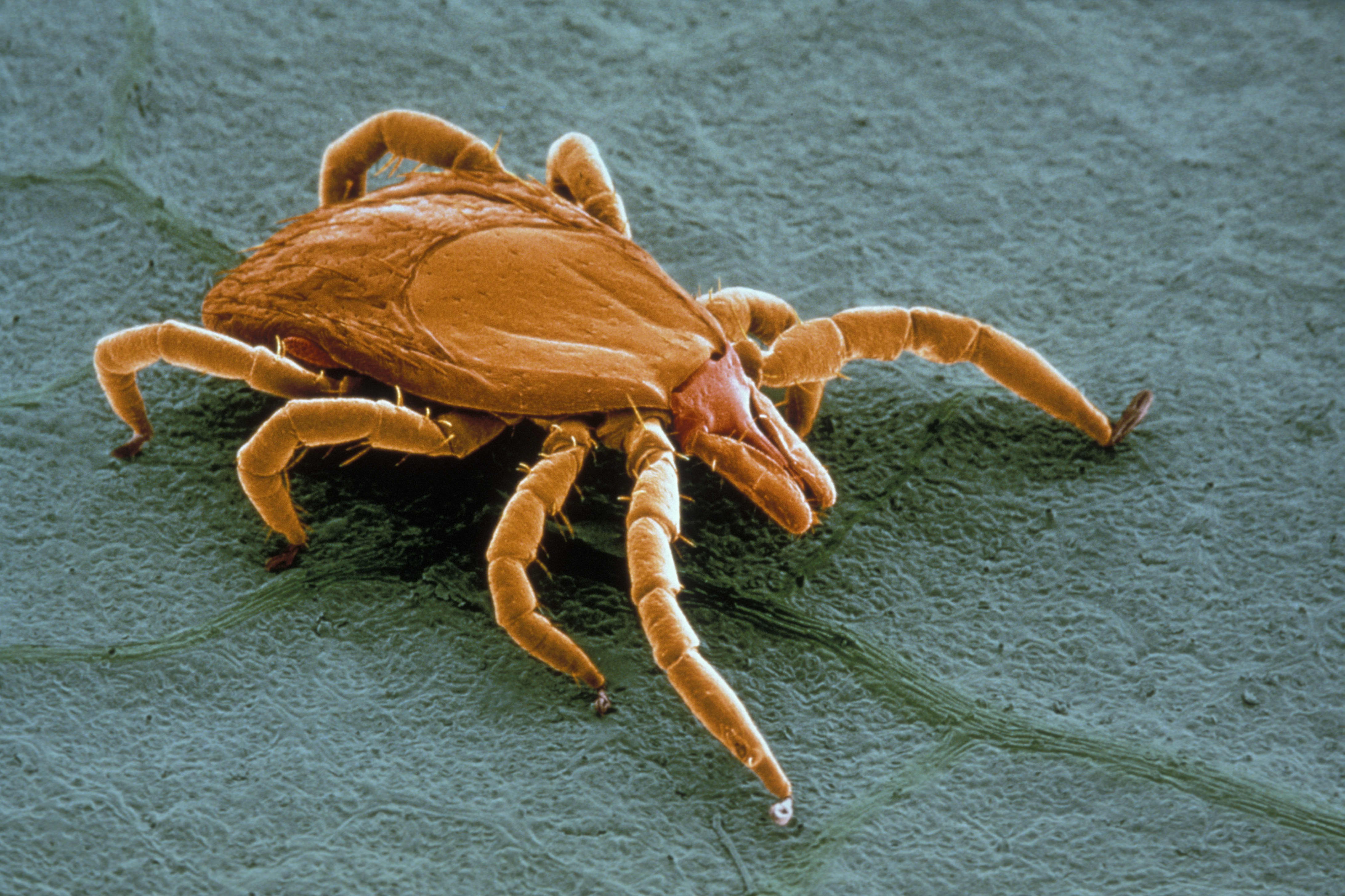





No lab centers are available in this city

In this blog post, we'll cover everything you need to know about Lyme disease: its symptoms, treatment options, prevention strategies and tips for recovery. So grab a cup of tea and join us as we dive into the world of Lyme disease.
Lyme disease is a tick-borne illness caused by the bacterium Borrelia burgdorferi. The disease gets its name from where it was first identified - Lyme, Connecticut, in 1975. Ticks that carry the bacteria can be found all over the world and are most commonly seen in wooded areas or places with tall grasses.
When an infected tick bites a human, they transmit the bacteria into their bloodstream. However, not all ticks carry this bacterium; only certain species such as black-legged ticks have been known to spread Lyme disease. Additionally, not everyone who contracts Lyme disease will develop symptoms.
Lyme disease often starts with flu-like symptoms which may include fever, fatigue and muscle aches. In some cases, patients may also experience rashes that look like bulls-eye patterns around the site of the bite. If left untreated or undiagnosed for too long, more severe complications may arise such as neurological problems or joint pain.
In essence, Lyme disease can be tricky to diagnose due to its wide range of symptoms and potential complications if left untreated but prompt treatment is crucial for recovery.
Lyme disease is caused by the bacteria Borrelia burgdorferi and is transmitted to humans through infected ticks. Symptoms of Lyme disease typically begin between three days to one month after being bitten by an infected tick.
The early signs of Lyme Disease are often flu-like symptoms such as fever, chills, headache, muscle aches, and fatigue. A distinct rash known as erythema migrans may also appear around the site of the tick bite in about 70% to 80% of cases.
If left untreated or undetected for too long, more severe symptoms may develop including joint pain and swelling, facial paralysis (Bell’s palsy), heart palpitations or irregular heartbeat, as well as cognitive impairment. This can lead to long-term complications such as chronic arthritis or neurological disorders.
It is essential that individuals who have been bitten by a tick or exhibit any symptoms associated with Lyme Disease seek medical attention immediately for diagnosis and treatment options. Early detection is critical in ensuring successful recovery from this debilitating illness.
Treatment for Lyme disease typically involves antibiotics, which can be given orally or intravenously depending on the severity of the infection.
The length of treatment varies depending on the stage and severity of the disease. Early-stage Lyme disease can usually be treated with oral antibiotics for two to four weeks. However, if left untreated or diagnosed later, Lyme disease may require longer courses of intravenous antibiotics.
It's important to note that some people continue to experience symptoms even after completing antibiotic treatment. This is post-treatment Lyme disease syndrome (PTLDS) and may require additional therapies such as pain management or cognitive-behavioral therapy.
In addition to antibiotics and other therapies, it's also essential for individuals with Lyme disease to take steps towards improving their overall health and immune system function through healthy eating habits, exercise, and stress reduction techniques like meditation or yoga.
If you suspect that you have been infected with Lyme Disease seek medical care immediately - early detection and prompt treatment are key in preventing long-term complications associated with this potentially debilitating illness.
Preventing tick bites is the most effective way to prevent Lyme disease. When planning outdoor activities, it's important to take measures that can reduce your risk of getting bitten by ticks.
Wearing protective clothing such as long-sleeved shirts and pants can help prevent ticks from reaching your skin. It's also important to use insect repellent containing DEET on exposed skin areas.
When walking in wooded or grassy areas, stay in the middle of trails and avoid tall grasses where ticks are more likely to be found. After spending time outdoors, make sure you check yourself and others for ticks thoroughly.
If you do find a tick on your body, remove it with tweezers immediately without squeezing its body. Make sure to wash the bite site with soap and water afterward.
By taking these precautions, you can significantly decrease your chances of contracting Lyme disease while enjoying the great outdoors.
Recovering from Lyme Disease can be a long and challenging process, but it is possible with the right treatment and support. The length of recovery time varies depending on factors such as the severity of the infection, how early it was caught and treated, and an individual's overall health.
In many cases, antibiotics are used to treat Lyme Disease. These medications help to eliminate the bacteria causing the infection. However, even after completing a course of antibiotics, some people may still experience symptoms or have ongoing issues related to their infection.
To aid in recovery and manage symptoms, many people turn to alternative therapies such as herbal supplements or acupuncture. Others may work with physical therapists or occupational therapists to address any lingering joint pain or mobility issues.
It's important for those who have been diagnosed with Lyme Disease not to rush their recovery process. Giving your body ample rest and focusing on self-care can make a big difference in how you feel during treatment.
Support groups can also be helpful for those going through this experience. Talking with others who are experiencing similar challenges can provide comfort and understanding that family members or friends might not fully comprehend.
Remember that every person’s journey toward recovery will look different – there is no one-size-fits-all approach when it comes to healing from Lyme Disease.
Lyme disease is a serious illness that can have severe consequences if left untreated. It's essential to be aware of the symptoms and seek medical attention as soon as possible if you suspect you might have it.
Thankfully, there are effective treatments available for Lyme disease. Antibiotics can help eliminate the bacteria causing the infection and alleviate symptoms.
Prevention is also key when it comes to Lyme disease. Taking steps such as wearing protective clothing when outside, using insect repellent, checking your body for ticks regularly, and avoiding tick-infested areas can significantly reduce your risk of contracting this illness.
Recovery from Lyme disease takes time and patience. With proper treatment and care, most people with Lyme disease do recover fully. If you're struggling with post-treatment symptoms or need additional support during your recovery journey, don't hesitate to reach out to healthcare professionals who specialize in treating this condition.
Remember that early detection and treatment are crucial factors in successfully managing Lyme disease. By staying informed about its symptoms, prevention methods, treatment options,and recovery process,you'll be better equipped to protect yourself against this debilitating illness.
 Allergy Test
Allergy Test
 Anemia Test
Anemia Test
 Auto immune
Auto immune
 Blood disorder
Blood disorder
 Bone and Joint
Bone and Joint
 Cancer Test
Cancer Test
 Cardiology Test
Cardiology Test
 Covid Recovery
Covid Recovery
 Dengue Test
Dengue Test
 Depression
Depression
 Diabetes Test
Diabetes Test
 Fatigue
Fatigue
 Fever Test
Fever Test
 Full body
Full body
 Gastro Test
Gastro Test
 Gastrointestinal
Gastrointestinal
 Gynaecology Test
Gynaecology Test
 Heart Test
Heart Test
 HIV Test
HIV Test
 Hormone Test
Hormone Test
 Hypertension
Hypertension
 Immunity Test
Immunity Test
 Infectious Disease
Infectious Disease
 Infertility Test
Infertility Test
 Influenza Test
Influenza Test
 Iron Test
Iron Test
 Kidney Test
Kidney Test
 Liver Test
Liver Test
 Lung Test
Lung Test
 Nephrology
Nephrology
 Obesity
Obesity
 Orthopedics Test
Orthopedics Test
 Physician
Physician
 Pollution Health Checkup
Pollution Health Checkup
 Pregnancy Test
Pregnancy Test
 Prostate Test
Prostate Test
 Senior Citizen Test
Senior Citizen Test
 STD Test
STD Test
 Thyroid Test
Thyroid Test
 Tuberculosis Test
Tuberculosis Test
 Vitamin Test
Vitamin Test
 Women Health Test
Women Health Test
Sign up takes less than 60 secs and gives you access to your offers, orders and lab tests.
Looks like you are not registered with us. Please Sign up to proceed
OTP will be sent to this number by SMS
We have successfully received your details. One of the agents will call you back soon.
 To reach our help desk call 9213188888
To reach our help desk call 9213188888
No Lab Centers are available in this city
Looks like you are not registered with us. Please Sign up to proceed
OTP will be sent to this number by SMS
Not Registered Yet? Signup now.Looks like you are not registered with us. Please Sign up to proceed





 7982100200
7982100200.png)